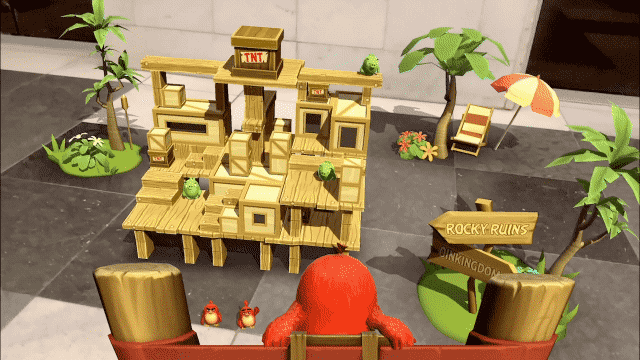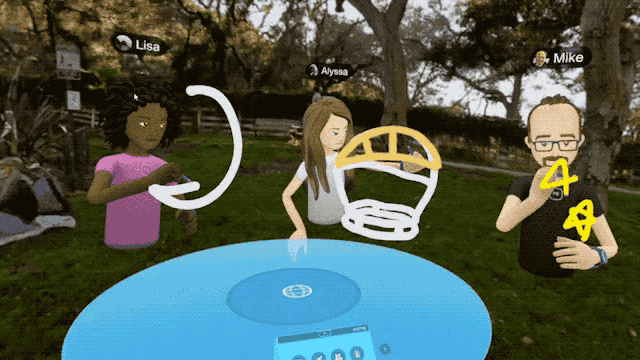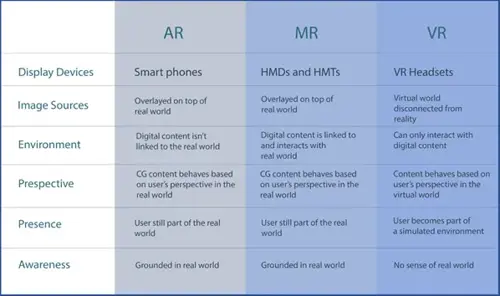This article is Part 1 of 2 focusing on understanding the different technologies that fall under the umbrella of XR and how to choose between them. In the second part, we will talk about how to identify opportunities for immersive technology in your business.
Current State of XR
The demand for XR has been growing exponentially in the last two years, and, in the next 5 years, the XR industry is predicted to be worth over $460 billion. A study from Market and Markets Research shows that XR has an incredibly healthy CAGR (compound annual growth rate) of more than 62%. A significant portion of this growth comes from the enterprise space where businesses are embracing digital transformation.
In addition to the arrival of the pandemic, the biggest factors increasing spending in XR are:
-
Access – Availability of more affordable solutions.
-
Adoption – Companies of all sizes are becoming more accepting of disruptive technology.
-
Hybrid Workforce – The new workforce, defined by hybrid employment and new generations demanding a greater selection of tech.
What is XR?
XR or Extended Reality is the umbrella term used to describe AR, MR and VR, the three main types of immersive technologies. Immersive Technology is any tech that digitally extends or replaces reality for the user. This is achieved with devices like smartphones, HMDs like HoloLens, or the Oculus.
Augmented Reality (AR) – uses smartphones and tablets to augment the real-world. Think of it as adding an extra layer of information onto your physical surroundings. A good example of this is the Angry Birds AR app for the iOS where you can interact with 3d characters in the real world.
 Source: https://www.engadget.com/2019-03-19-angry-birds-ar-iphone-ipad.html
Source: https://www.engadget.com/2019-03-19-angry-birds-ar-iphone-ipad.html
Virtual Reality (VR) – implies a completely immersive experience that shuts out the physical world and puts the user in a fully virtual environment. A great example of collaborative VR workspaces is from Spatial which allows employees collaborate, share space, manage a project all in a virtual environment.
 Source: https://teecom.com/will-virtual-reality-replace-conference-rooms/
Source: https://teecom.com/will-virtual-reality-replace-conference-rooms/
Mixed Reality (MR) – is a special case. If AR and VR are two ends of a spectrum, then MR sits in the middle of the two. It combines the ability to overlay digital information into the real world while also allowing the user to interact with the real world. Applications like Valorem’s Digital Twin where holograms can help interact with real world objects. Companies can create fully fleshed-out tutorials in MR that interact with the real world like the example below to engage and enable their remote and front line workforce to optimize operations and upskilling.
XR Cheat Sheet

All these technologies are valuable for conveying magnitudes of information visually, to help companies get an idea across, train employees, and save money doing it! By understanding these differences, it becomes easier to make a more informed decision when thinking about which technology to employ.
How to Choose the Right Immersive Tech
Ask yourself questions based on these 4 categories.
1. Users
Always start with a user-centric solution. Think about how the solution you’re providing makes the user’s life easier. Who will the end user be? Is there a steep learning curve or is this something they are familiar with? It is also important to consider what kind of device the users most commonly have access to.
2. Environment
Then think about ‘where’ this device is going to be used most often. For example – is it in a tight space in an elevator by a technician or is it on the couch being used by a customer? For both these examples, you could use either MR or AR, however, it would make more sense to use MR in the case of the technician, because unlike the customer, it is necessary for the technician to have a handsfree solution that visualizes contextual information.
3. Immersion
Does the user need to be grounded in the real world, or not? For example, is the user going to be doing a training module learning to assemble a complex piece of machinery or is the user going through a ‘hands-on’ experience of learning to work in a situation where it would not be safe for the user to work without proper training ex: surgery. In the first example – AR would be the best option because the user can have instructions readily available whenever they need it and it’s easily viewed in context to their environment. In the second example, VR would make most sense because you could easily simulate an environment where the user learns complex surgery in a simulated environment and learn without major consequences.
4. Purpose of the application
What is the app going to be used for – training/data visualization/designing products/viewing designs etc. The purpose of the app will help drive your decision as to which tech makes the most sense for the solution you’re building. For example, if you’re looking to build an app that shows a building at life-size scale, to stakeholders so that they can review designs and materials, you can choose between MR and VR. With MR, you can show these changes in an existing environment, like on the building site or in your office conference room. With VR, you can conduct fly throughs, get different points of views, and show everything in real life scale, while being fully immersed in the simulated environment. Knowing your primary objective will help you determine which one of those choices makes the most sense.
Summary
When to choose AR?
- Need to show information in the real world, but it doesn't need to interact with anything in the real world.
- When a phone is more easily available compared to other devices.
- When full immersion is not required.
- Tasks can be collaborative.
- Can be used in any environment from industrial to commercial, ex: manufacturing and, also, advertising.
When to choose MR?
- Information being shown needs to be grounded and contextual.
- Additionally, the user needs the ability to interact with the real world through the device.
- Visualize 3D assets at scale, and, also, in context.
- Specialized tasks where the user needs specific information while having hands free capabilities and voice activation and, also collaboration.
- Most suitable for industrial environments ex: manufacturing, maintenance etc.
When to choose VR?
- Users need full immersion and don’t need any awareness of their physical space to experience their reality.
- Not suitable for outdoor use or industrial use. Best suited within a controlled environment where the user has freedom to move around and finish their virtual tasks.
- Collaboration and real-time remote interaction.
- Visualize 3D assets at scale, but not in context.
When to consider a combination of devices?
One last thing to consider is sometimes, the best option is a combination of devices. For example, you could have the main surgeon wearing a Hololens, while interacting with the patient and making the diagnosis. The nurses and the admin staff collaborating with and supporting the doctor could have smartphones or even tablets as their primary device. This is a good thing to consider when the budget doesn’t allow for every user to have the same device or where the main user needs a specific device, while support users can work in collaboration with other devices that are more commonly available.
In the next article, we’ll look at some most common use cases and three examples of fully deployed and current solutions for each technology. Additionally, we’ll also talk about how we help customers identify and deploy transformative immersive technology solutions for their businesses. To learn more about extended reality tech and use cases, watch our recent webinar here.





